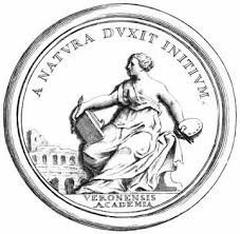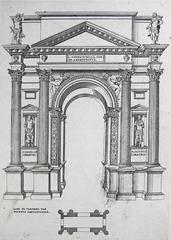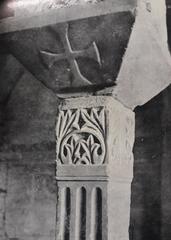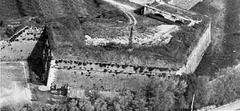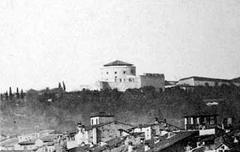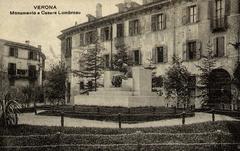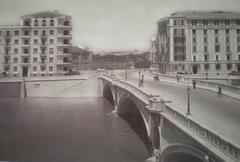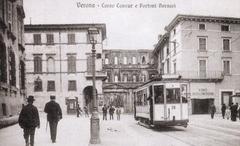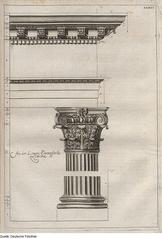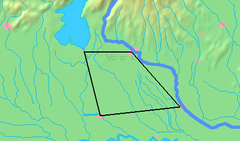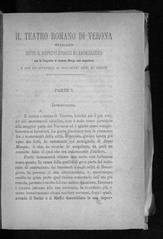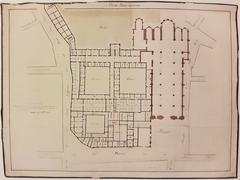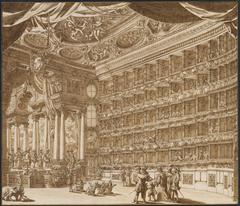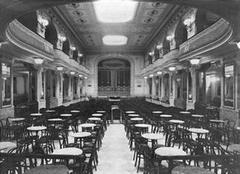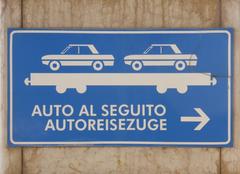Comprehensive Guide to Visiting Casa di Romeo, Verona, Italy
Date: 01/08/2024
Introduction
Casa di Romeo, or Romeo’s House, is an enchanting medieval palace nestled in the heart of Verona, Italy. While it may not enjoy the same level of fame as Casa di Giulietta (Juliet’s House), this historic site holds substantial cultural, architectural, and literary significance. Steeped in history and immortalized by William Shakespeare’s timeless play, “Romeo and Juliet,” Casa di Romeo offers visitors a unique glimpse into medieval Verona’s past and the storied feud between the Montecchi and Capuleti families. Whether you’re a history enthusiast, a Shakespeare lover, or a curious traveler, this comprehensive guide will provide you with all the information you need to make the most of your visit to Casa di Romeo, including its history, architectural features, and practical travel tips. For more detailed historical context, you can refer to sources like Atlas Obscura and Italy This Way.
Table of Contents
- Introduction
- Origins and Architectural Style
- Historical Ownership
- Connection to the Montecchi Family
- Architectural Significance
- Cultural Importance
- Visitor Experience
- Nearby Attractions
- Practical Tips for Visitors
- Frequently Asked Questions (FAQ)
- Conclusion
Origins and Architectural Style
Casa di Romeo, a 14th-century residence, exemplifies the architectural style of its time with Ghibelline-style merlons and fortifications. The building’s robust structure, complete with a sturdy tower and high crenellated walls, lends it the appearance of a small castle. Located on a narrow road in the center of Verona, its proximity to Casa di Giulietta makes it an intriguing stop (Atlas Obscura).
Historical Ownership
Initially owned by Cagnolo Nogarola, a Veronese noble of French descent, the palace was later confiscated by Cangrande I Della Scala, the Lord of Verona, during the political upheavals of the late 14th century. After the Della Scala family’s fall in 1387, the Nogarola family regained ownership, though the palace changed hands multiple times over centuries (Atlas Obscura).
Connection to the Montecchi Family
The Montecchi family, believed to be the historical counterparts of Shakespeare’s Montagues, resided here until the early 14th century. Supporters of the Ghibelline faction, their story is a vital backdrop to Shakespeare’s narrative (Atlas Obscura).
Architectural Significance
The architecture of Casa di Romeo is a quintessential example of medieval Veronese design. The building features a robust, fortified structure with high walls and narrow windows, indicative of the defensive needs of the era. The house is constructed from red brick and stone, materials commonly used in the period. The Gothic-style elements, such as pointed arches and intricate stonework, reflect the architectural trends of the time. Visitors can appreciate the well-preserved façade, which offers a glimpse into the architectural practices of medieval Verona.
Cultural Importance
Casa di Romeo holds immense cultural significance due to its association with Shakespeare’s “Romeo and Juliet.” The play has immortalized the house, making it a pilgrimage site for literature enthusiasts and romantics alike. The house symbolizes the timeless themes of love and conflict, resonating with visitors from around the world. The cultural impact of the house is further amplified by its location in Verona, a city that has embraced its Shakespearean heritage with numerous festivals, performances, and events celebrating the Bard’s work.
Visitor Experience
Location and Accessibility
Casa di Romeo is located in the heart of Verona’s historic center, at Via Arche Scaligere, 2. The house is easily accessible by foot from other major attractions in Verona, such as Juliet’s House and the Verona Arena. Public transportation options, including buses and taxis, are readily available for those traveling from other parts of the city.
Guided Tours and Information
While Casa di Romeo is not open to the public for interior tours, visitors can still enjoy the exterior and learn about its history through guided tours offered by local tour operators. Ticket prices for these tours vary but typically range from €10 to €20. These tours often include visits to other Shakespearean sites in Verona, providing a comprehensive understanding of the city’s literary heritage. Information plaques and markers around the house offer insights into its historical and cultural significance.
Best Time to Visit
The best time to visit Casa di Romeo is during the spring and fall months when the weather is mild, and the tourist crowds are smaller. Visiting early in the morning or late in the afternoon can also provide a more serene experience, allowing visitors to appreciate the house without the hustle and bustle of larger groups.
Nearby Attractions
Juliet’s House
Just a short walk from Casa di Romeo is Juliet’s House, another iconic Shakespearean site. Visitors can explore the house, which features a museum dedicated to the play, and stand on the famous balcony where Juliet is said to have spoken to Romeo. The courtyard also houses a bronze statue of Juliet, which is a popular spot for photos.
Verona Arena
The Verona Arena, a well-preserved Roman amphitheater, is another must-visit attraction near Casa di Romeo. The arena hosts a variety of events, including opera performances and concerts, offering visitors a chance to experience Verona’s rich cultural scene.
Piazza delle Erbe
Piazza delle Erbe, Verona’s oldest square, is located nearby and is a vibrant hub of activity. The square is surrounded by historic buildings, cafes, and market stalls, making it an ideal spot to relax and soak in the atmosphere of the city.
Practical Tips for Visitors
Language
While many locals in Verona speak English, learning a few basic Italian phrases can enhance the visitor experience. Simple greetings and expressions of gratitude are always appreciated and can make interactions more enjoyable.
Dress Code
As Casa di Romeo is an outdoor site, there is no specific dress code. However, comfortable walking shoes are recommended due to the cobblestone streets and uneven surfaces in the historic center.
Photography
Photography is allowed at Casa di Romeo, and visitors are encouraged to capture the beauty of the medieval architecture. However, it is important to be respectful of other visitors and avoid obstructing pathways.
Frequently Asked Questions (FAQ)
Q: What are the visiting hours for Casa di Romeo?
A: Casa di Romeo is accessible 24/7 as it is an outdoor site, though guided tours are available during daylight hours.
Q: How much are tickets to Casa di Romeo?
A: While the house itself is not open for interior tours, guided tours that include Casa di Romeo typically range from €10 to €20.
Q: What are the best nearby attractions?
A: Nearby attractions include Juliet’s House, Verona Arena, and Piazza delle Erbe.
Q: Is Casa di Romeo accessible for visitors with disabilities?
A: The site itself is not fully accessible for visitors with disabilities due to narrow streets and cobblestone paths.
Conclusion
Casa di Romeo stands as a testament to Verona’s rich history and its enduring connection to Shakespeare’s legendary tale of “Romeo and Juliet.” The house’s medieval architecture, coupled with its association with the Montecchi family, provides a captivating backdrop for any visitor seeking to explore the cultural and literary heritage of this iconic city. Despite its exterior-only accessibility, the site offers a profound experience, enriched further by nearby attractions such as Juliet’s House, Verona Arena, and Piazza delle Erbe. By planning your visit during off-peak hours and taking advantage of guided tours, you can fully immerse yourself in the historical ambiance of Casa di Romeo. Whether you’re there to capture stunning photographs, savor local cuisine, or simply to walk in the footsteps of history, Casa di Romeo promises an unforgettable journey into the romance and intrigue of Verona. For further insights and travel tips, consult additional resources like Along Dusty Roads and The Cure for Curiosity.
References
- Atlas Obscura, n.d. House of Romeo
- Italy This Way, n.d. Verona
- Along Dusty Roads, n.d. Visiting Verona Tips Guide
- The Cure for Curiosity, n.d. Visiting Juliet in Verona
